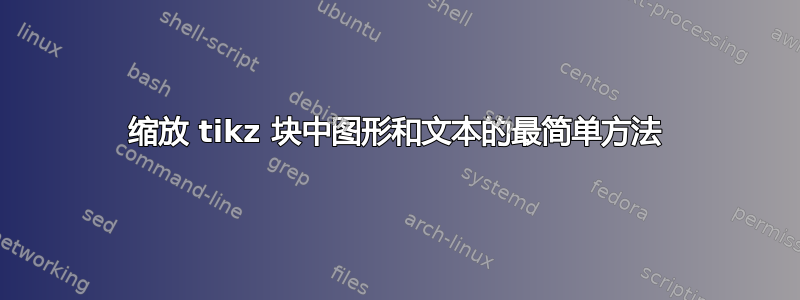
我正在使用 overleaf。我为需要转换为单列文档的 2 列文档编写了此代码块。
\begin{figure}
\centering
\begin{minipage}{0.2\textwidth}
\def\xspace{0}
\centering
\hspace{-6mm}
\begin{tikzpicture}
\node[anchor=south west,inner sep=0] (image) at (0,0) {\includegraphics[width=0.8\textwidth,trim={0 0 0 0},clip]{Chapters/ICRA2022/figures/table_items.png}};
\begin{scope}[x={(image.south east)},y={(image.north west)}]
\foreach \i/\j in {{(0.2,0.6)/(0.2,1.1)},{(0.3,0.75)/(0.3,1.1)},{(0.39,1)/(0.39,1.1)},{(0.62,0.7)/(0.62,1.1)}} \draw [-stealth, red, thick] \i -- \j;
\node[scale=0.45] at (0.42,1.15) {$\{O^{(1)},O^{(2)},O^{(3)}, \ ... \ , O^{(7)}\}$};
\node[scale=0.45] at (0.42,1.25) {$O^{(n)}$ for Pick Action};
\end{scope}
\end{tikzpicture}\\
\hspace{-9mm}
\subfloat[]{\begin{tikzpicture}
\node[anchor=south west,inner sep=0] (image) at (0,0) {\includegraphics[width=0.8\textwidth,trim={0 0 0 0},clip]{Chapters/ICRA2022/figures/table_grid.png}};
\begin{scope}[x={(image.south east)},y={(image.north west)}]
\foreach \i/\j in {{(0.015,0.68)/(0.015,1.1)},{(0.15,0.7)/(0.15,1.1)},{(0.285,0.72)/(0.285,1.1)},{(0.42,0.74)/(0.42,1.1)},{(0.557,0.77)/(0.557,1.1)}} \draw [-stealth, red, thick] \i -- \j;
\node[scale=0.45] at (0.33+\xspace,1.15) {$\{O^{(1)},\ O^{(2)},\ O^{(3)},\ O^{(4)}, \ O^{(5)}, \ ... \}$};
\node[scale=0.45] at (0.35+\xspace,1.25) {$O^{(n)}$ for Place Action};
\end{scope}
\end{tikzpicture}}
\end{minipage}\hfill
\begin{minipage}{0.28\textwidth}
\centering
\hspace{-10mm}
\subfloat[]{\includegraphics[width=1.1\textwidth,trim={1cm 0.32cm 0 0.25cm},clip]{Chapters/ICRA2022/figures/architecturenewest.pdf}}
\end{minipage}\caption{(a) $O^{(n)}$ for pick and place actions (b) Our gaze network. The gaze attention block attends to fixations relative to each object while the object attention block attends to objects that are most likely being fixated on.}\label{fig:architecture}
\end{figure}
这就是它在 2 列文档中的最初样子。
这就是它在单列文档中看起来的样子,中间有太多空间。
如何缩放代码块中的内容?改变小页面的大小不起作用,因为这会导致图形看起来像这样,其中文本不再与箭头对齐。我不想手动更新定位,因为我有 50 多个这样的图形。
我正在寻找一个函数,例如\scale_everything
\begin{figure}
\centering
% % % % % % % % % % % % % % % % % % %
% EXAMPLE USAGE OF SCALE EVERYTHING %
% % % % % % % % % % % % % % % % % % %
\scale_everything{0.5\textwidth}{
\begin{minipage}{0.2\textwidth}
\def\xspace{0}
\centering
\hspace{-6mm}
\begin{tikzpicture}
\node[anchor=south west,inner sep=0] (image) at (0,0) {\includegraphics[width=0.8\textwidth,trim={0 0 0 0},clip]{Chapters/ICRA2022/figures/table_items.png}};
\begin{scope}[x={(image.south east)},y={(image.north west)}]
\foreach \i/\j in {{(0.2,0.6)/(0.2,1.1)},{(0.3,0.75)/(0.3,1.1)},{(0.39,1)/(0.39,1.1)},{(0.62,0.7)/(0.62,1.1)}} \draw [-stealth, red, thick] \i -- \j;
\node[scale=0.45] at (0.42,1.15) {$\{O^{(1)},O^{(2)},O^{(3)}, \ ... \ , O^{(7)}\}$};
\node[scale=0.45] at (0.42,1.25) {$O^{(n)}$ for Pick Action};
\end{scope}
\end{tikzpicture}\\
\hspace{-9mm}
\subfloat[]{\begin{tikzpicture}
\node[anchor=south west,inner sep=0] (image) at (0,0) {\includegraphics[width=0.8\textwidth,trim={0 0 0 0},clip]{Chapters/ICRA2022/figures/table_grid.png}};
\begin{scope}[x={(image.south east)},y={(image.north west)}]
\foreach \i/\j in {{(0.015,0.68)/(0.015,1.1)},{(0.15,0.7)/(0.15,1.1)},{(0.285,0.72)/(0.285,1.1)},{(0.42,0.74)/(0.42,1.1)},{(0.557,0.77)/(0.557,1.1)}} \draw [-stealth, red, thick] \i -- \j;
\node[scale=0.45] at (0.33+\xspace,1.15) {$\{O^{(1)},\ O^{(2)},\ O^{(3)},\ O^{(4)}, \ O^{(5)}, \ ... \}$};
\node[scale=0.45] at (0.35+\xspace,1.25) {$O^{(n)}$ for Place Action};
\end{scope}
\end{tikzpicture}}
\end{minipage}}\hfill
\scale_everything{0.4\textwidth}{
\begin{minipage}{0.28\textwidth}
\centering
\hspace{-10mm}
\subfloat[]{\includegraphics[width=1.1\textwidth,trim={1cm 0.32cm 0 0.25cm},clip]{Chapters/ICRA2022/figures/architecturenewest.pdf}}
\end{minipage}}\caption{(a) $O^{(n)}$ for pick and place actions (b) Our gaze network. The gaze attention block attends to fixations relative to each object while the object attention block attends to objects that are most likely being fixated on.}\label{fig:architecture}
\end{figure}
以下是 MWE:
\documentclass{article}
\usepackage[utf8]{inputenc}
\usepackage{float}
\usepackage{subfig}
\usepackage{graphicx}
\usepackage{tikz}
\begin{document}
\begin{figure}
\centering
\subfloat[][a]{
\begin{tikzpicture}
\node[anchor=south west,inner sep=0] (image) at (0,0) {\includegraphics[width=0.3\textwidth,trim={0 0 0 0},clip]{example-image-a}};
\begin{scope}[x={(image.south east)},y={(image.north west)}]
\foreach \i/\j in {{(0.2,0.6)/(0.2,1.1)},{(0.3,0.75)/(0.3,1.1)},{(0.39,1)/(0.39,1.1)},{(0.62,0.7)/(0.62,1.1)}} \draw [-stealth, red, thick] \i -- \j;
\node[scale=0.45] at (0.42,1.15) {$\{O^{(1)},O^{(2)},O^{(3)}, \ ... \ , O^{(7)}\}$};
\node[scale=0.45] at (0.42,1.25) {$O^{(n)}$ for Pick Action};
\end{scope}
\end{tikzpicture}}
\subfloat[][a]{
\begin{tikzpicture}
\node[anchor=south west,inner sep=0] (image) at (0,0) {\includegraphics[width=0.3\textwidth,trim={0 0 0 0},clip]{example-image-a}};
\begin{scope}[x={(image.south east)},y={(image.north west)}]
\foreach \i/\j in {{(0.2,0.6)/(0.2,1.1)},{(0.3,0.75)/(0.3,1.1)},{(0.39,1)/(0.39,1.1)},{(0.62,0.7)/(0.62,1.1)}} \draw [-stealth, red, thick] \i -- \j;
\node[scale=0.45] at (0.42,1.15) {$\{O^{(1)},O^{(2)},O^{(3)}, \ ... \ , O^{(7)}\}$};
\node[scale=0.45] at (0.42,1.25) {$O^{(n)}$ for Pick Action};
\end{scope}
\end{tikzpicture}}
\label{steady_state}
\end{figure}
\end{document}






